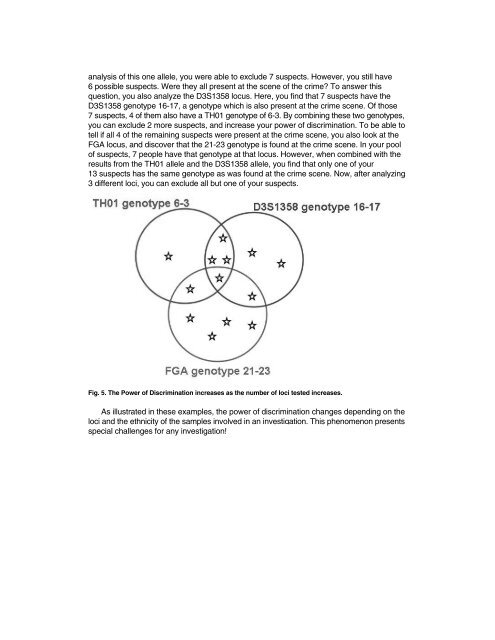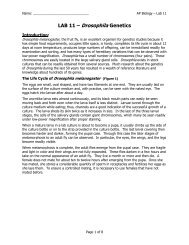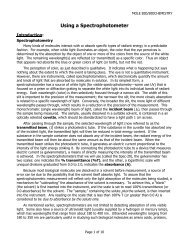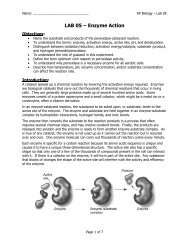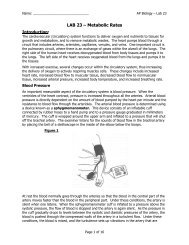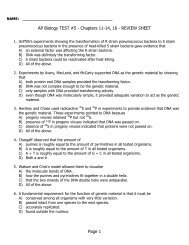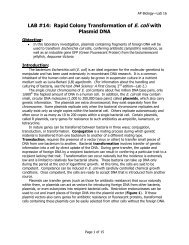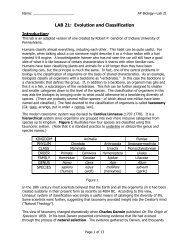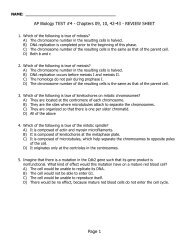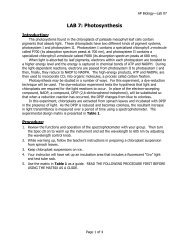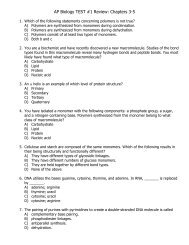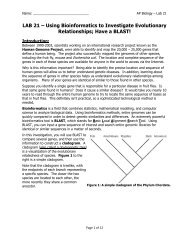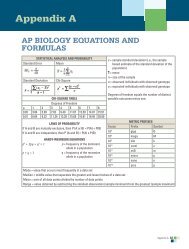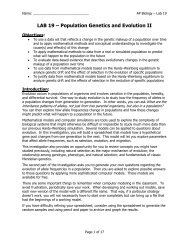Crime Scene Investigator PCR Basics⢠Kit
Crime Scene Investigator PCR Basics⢠Kit
Crime Scene Investigator PCR Basics⢠Kit
You also want an ePaper? Increase the reach of your titles
YUMPU automatically turns print PDFs into web optimized ePapers that Google loves.
analysis of this one allele, you were able to exclude 7 suspects. However, you still have<br />
6 possible suspects. Were they all present at the scene of the crime? To answer this<br />
question, you also analyze the D3S1358 locus. Here, you find that 7 suspects have the<br />
D3S1358 genotype 16-17, a genotype which is also present at the crime scene. Of those<br />
7 suspects, 4 of them also have a TH01 genotype of 6-3. By combining these two genotypes,<br />
you can exclude 2 more suspects, and increase your power of discrimination. To be able to<br />
tell if all 4 of the remaining suspects were present at the crime scene, you also look at the<br />
FGA locus, and discover that the 21-23 genotype is found at the crime scene. In your pool<br />
of suspects, 7 people have that genotype at that locus. However, when combined with the<br />
results from the TH01 allele and the D3S1358 allele, you find that only one of your<br />
13 suspects has the same genotype as was found at the crime scene. Now, after analyzing<br />
3 different loci, you can exclude all but one of your suspects.<br />
Fig. 5. The Power of Discrimination increases as the number of loci tested increases.<br />
As illustrated in these examples, the power of discrimination changes depending on the<br />
loci and the ethnicity of the samples involved in an investigation. This phenomenon presents<br />
special challenges for any investigation! This topic is addressed in more detail in<br />
Appendices B and C.<br />
11


